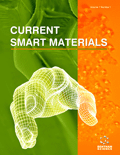Abstract
Background: Spectroscopic studies in the past have exposed that PbO-B2O3 glasses are mostly classified as non-crystalline materials. These glasses prove to good host for incorporating RE (rare earth) and transition metal oxides due to its low phonon energy, large ion Polarizability and higher covalency. TM’s are widely used in the glass due to their two or more valence states. These states affect optical as well as structural properties. Due to commercial importance, B2O3 is good glass former. It is frequently used as a dielectric material. The transition metals incorporated borate glasses have great importance in the field of luminescent solar energy concentrators, gamma ray shielding materials, opto-acoustical electronics, solid state lasers, optical fibres, UV filters and ultrasonic devices in nonlinear devices for frequency conversion in the ultraviolet region and piezoelectric actuator. In transition metals cadmium oxide incorporated glasses has great importance because it can act both as network former and network modifier. Another important factor of cadmium glass is low electrical resistivity, wide band gap and high transmission in the visible region. It has different applications such as photo transistors, diodes, transparent electrodes, solar cells and gas sensors.
Method: Glass samples xCdO-(35-x) PbO–65B2O3 with x varying from 0 to 15 mol % have been formed by the conventional melt quench technique. The raw materials of cadmium oxide (CdO), lead oxide (PbO) and boric oxide (B2O3) of suitable amounts are mixed properly and melted crucible at temperature 1000-1100°C in silica till the formation of bubble free liquid. This melt is then transferred in to a heated steel mould. These samples are annealed at temperature of 380°C for 1 hour so that samples do not break due to remaining internal strains. These samples are grinded with different grades of SiC and polished with CeO2 so as to obtain maximum flatness. The composition of the glass samples is shown in Table 1. The structural and physical properties are examined by using XRD (X-ray diffraction), Fourier transform infrared spectroscopy (FTIR), density and molar volume techniques.
Results: Cadmium oxide doped glasses have been synthesized by using melt quench technique. XRD, density, molar volume and FTIR spectroscopy have been used to characterize the glasses. XRD confirms the glassy behaviour of prepared samples. There is a rise in density of glasses (4.11 to 4.94 g/cm3) and consistent decline in molar volume (30.02 to 22.10) of glasses with incorporation of cadmium. FTIR spectroscopy shows that addition of cadmium oxide helps to translate [BO3] units into [BO4] units. Also the corporation of cadmium effect on the ionic/covalent behaviour of glasses; covalency decreases and ionicity increases.
Conclusion: (1) Xrd shows the amorphous nature of prepared samples. (2) Results of boron-boron separation show that addition of cadmium oxide makes compaction in glass network which is due to the presence of BO4 groups. These factors help to increase the density and reduce the molar volume. (3) Ionicity and covalency results confirmed that addition of cadmium oxide increased the ionicity of glass sample which may be used to make some ionic applications.
Keywords: Covalency, FTIR, glasses, Cadmium doping, non-crystalline materials.
Graphical Abstract
 21
21 2
2




